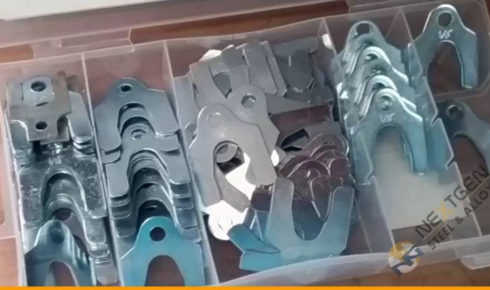There’s something quietly satisfying about watching a seasoned technician work on a car. The way they move — quick but calculated — speaks volumes. It’s not just experience at play; it’s also the quality of tools they rely on. We often get swept up in the tech buzz — self-driving systems, digital dashboards, AI diagnostics. But when you zoom in on what keeps cars running true, it’s the fundamentals. The unsung heroes. Let’s talk about those — the humble tools in every well-run garage that never get flashy ad campaigns but carry the real weight of precision and performance.
Let’s start where the rubber meets the road, quite literally.
Keeping It Balanced: The Often-Ignored Art of Smooth Driving
You ever feel that annoying vibration in your steering wheel when you hit 60 mph on the highway? That’s your car politely screaming, “Hey, my wheels are out of balance!”
Balance issues are more than just irritating. They affect fuel economy, tread life, and handling. That’s where wheel balancing tools step in — and they’re anything but basic. Today’s balancing systems are sleek, accurate, and downright essential. Whether it’s static balancing for lighter vehicles or dynamic for high-speed sedans, having the right gear is non-negotiable. Some techs still cling to the “eye and feel” method, and sure, there’s wisdom in experience — but machines don’t lie. If your shop doesn’t have proper balancing tools, you’re not just behind — you’re setting your customers up for uneven rides and premature tire deaths.
Tiny Tools, Big Impact: Depth Gauges and Why They Matter More Than You Think
Let’s shift gears. Literally downward — to the tread.
There’s this moment when a customer insists their tires are “just fine” because the grooves “look deep enough.” Ah, the illusion of depth. But there’s no arguing with numbers. Depth gauges offer that cold, hard truth. They measure the tread with laser-like precision, and it’s more than just a safety check. Tread depth influences water dispersion, braking efficiency, and cornering grip. It’s also the difference between a legal tire and a liability in rainy weather.
A lot of shops keep depth gauges handy — but not all use them consistently. And here’s the thing: they’re not expensive. They’re not complicated. They just do their job, every single time. Which, honestly, is the kind of reliability we all wish more things in life had.
The Subtle Science of Shimming
Alright, let’s dig into something that sounds boring — but quietly holds your alignment together: shims.
Yeah, shop shims don’t get much glory. They’re tiny. Kind of ugly. But shims are alignment’s secret weapon. Whether it’s camber correction, toe adjustment, or caster tweaking, the right shim can save hours of frustration. Plus, they help avoid over-reliance on digital alignment systems that may not always account for mechanical imperfections or older vehicles.
And let’s be honest — those little pieces of metal and plastic can sometimes be the only things standing between a returning customer and a one-time Yelp rage review. If you’ve ever had a vehicle pull to the left despite “perfect” alignment specs, you know how much a half-millimeter shim can restore sanity.
More Than Tools — They’re Trust Builders
When people bring their vehicles into a shop, they’re not just buying a service. They’re buying peace of mind. That moment when a customer watches you pull out your depth gauge and explain exactly why their rear tires are one storm away from hydroplaning — that’s not just a pitch. That’s trust.
Same with wheel balancing. You could send someone off with a “good enough” spin, or you could take the extra few minutes to ensure a butter-smooth highway ride. It’s those small, meticulous actions — backed by the right tools — that separate decent shops from exceptional ones.
And shims? If you’re explaining to a car-savvy client how you adjusted caster using a custom stack because the subframe’s slightly shifted from a previous collision, you’ve already won that client over for life. You didn’t just fix their car — you respected it.
The Takeaway: Don’t Underestimate the Basics
There’s a weird irony in how the smallest tools often play the biggest roles. You won’t find customers Googling “best depth gauge 2025” or asking about your shim inventory — but they’ll sure feel it when those things aren’t used.
